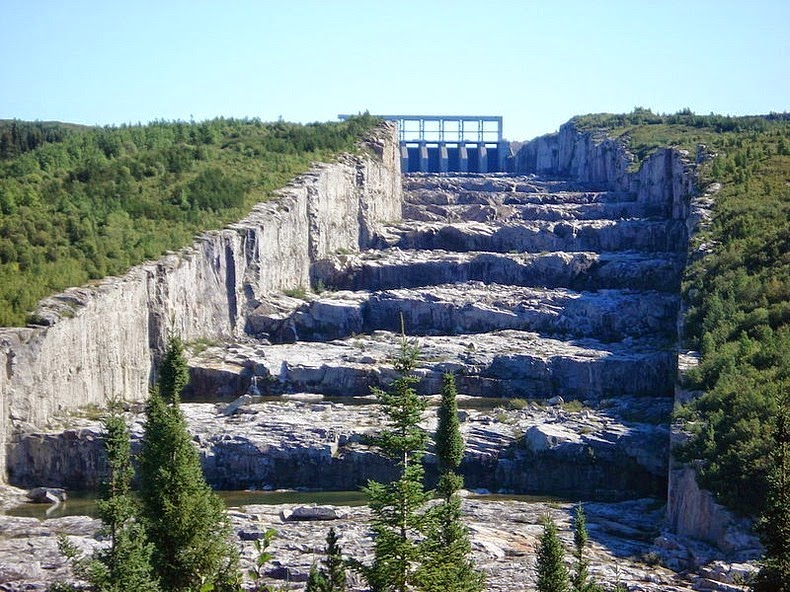The Robert-Bourassa Reservoir is located in northern Quebec, in Canada. It was created in the mid-1970s by impounding the La Grande River to store water needed for hydroelectric power generation at Robert-Bourassa and La Grande-2-A generating stations. The reservoir has a capacity of 61.7 billion cubic meters and covers a surface area of 2,815 square km. The embankment dam is 162 meters high and 2,835 meters in length. But the centerpiece of the dam and reservoir is the immense spillway aptly called "the giant's staircase."
The spillway is shaped like a staircase almost 2 kilometers long and features 10 steps, each 10 meters high and 122 meters wide, or twice the width of a football field. It has a discharge capacity of 16,280 cubic meters of water per second, slightly more water than St. Lawrence River beside Québec’s capital city. This phenomenal capacity corresponds to an exceptional flood likely to occur once every 10,000 years.
This image of the Giant’s Staircase is deceptive. Each step is 10 m tall and the total length of the spillway from the gates at the top to the bottom is almost 2 km. Photo credit
The spillway allows excess water to escape safely from the reservoir without spilling over the dam crest. The stepped nature of the spillway is designed to break the flow of the water and thus reduce its kinetic energy to avoid damage and erosion. Except during flood periods, water does not normally flow over this spillway. When there is a flood the gates, which can be seen at the top of the spillway, are opened and water is discharged into Grande Riviere or the Great River.

Sources: Hydroquebec / Wikipedia
















These pictures do not do justice to the size of this spillway. Each "step" is the size of a 4 storey building. It is truly incredible.
ReplyDelete